A Horrifying Mummified Creature Was Found in an Egyptian Tomb
Answers to ancient civilizations have been a mystery for many years. From the mummified crocodiles of Egypt to the Iron Age Jerusalem Wall, the discoveries unearthed in 2021 are a testament to an ongoing quest by archaeologists to uncover the ancient past.
Discoveries, like Neanderthal Art in Germany or Ancient Casabermeja in Spain, add to our understanding of the past and is fascinating. Join us on the journey of exploring these remarkable finds.
Mummified Crocs of Egypt
In 2019, archaeologists uncovered 10 mummified crocodiles at Qubbat al-Hawā in Egypt. A recent study in 2023 has revealed that these ancient reptiles are from the pre-Ptolemaic era – over 2,300 years ago. They were found in a remarkable condition, ranging from 1.8-3.5m in length.
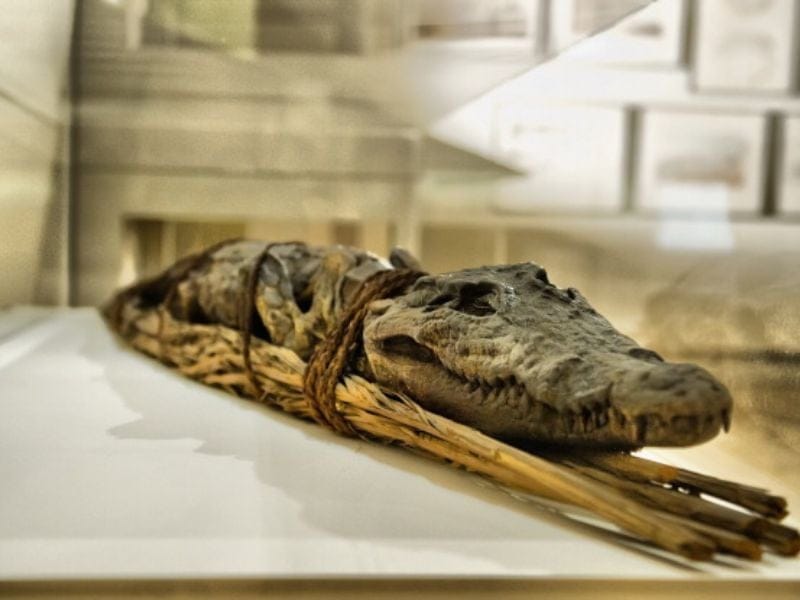
Source: Marco Secchi / Getty Images
They are thought to have been mummified as offerings for Sobek, the Egyptian god with a crocodile head. Here’s an image of another mummified croc found in Egypt, currently held in the Crocodile Museum of Kom Ombo.
Mummified Cats & Beetles in Egypt.
Besides mummifying crocodiles, ancient Egyptians mummified cats as well. It was said that these cats were offerings to the goddess of cats, Bastet, and had a special place in the afterlife.

Source: KHALED DESOUKI/AFP via Getty Images
In 2018, archaeologists also discovered three tombs filled with mummified cats in Saqqara’s Userkaf Pyramid. But that’s not all – they also found scarab beetles, rarely seen in tombs like these. It’s believed that these beetles were symbols of the sun god Ra.
Byzantine Wine Factory Find in Israel
Archaeologists in Yavne, Israel, uncovered a 1,500-year-old wine-making complex at a dig in October 2021! This massive winery dates back to the Byzantine era and contained five wine presses, large warehouses, Gaza jars, and kilns for clay amphorae. It could produce two million liters of wine every year.

Source: MENAHEM KAHANA/AFP/Getty Images
Yavne varietals may have been exported to Egypt, Turkey, Greece, and perhaps even southern Italy, according to archaeologists. The Israel Antiquities Authority has confirmed that the factory produced “Gaza wine,” a light white prestige wine. This discovery confirms that the region had a booming wine trade!
Oldest Human Footprints in North America
Researchers in North America unearthed ancient, fossilized footprints in the White Sands National Park in New Mexico, dating to between 21,000 – 23,000 years ago. The findings, published in Science in September 2021, reveal that these are the oldest human impressions ever found on the continent.

Source: National Park Service/Wikimedia Commons
The prints, mostly belonging to children and adolescents, were found buried in layers of sediment at the site of an ancient Lake Otero. This discovery completely revises our understanding of human history, as it was previously believed humans arrived in North America much later, around 13,500 to 16,000 years ago.
New Species of Dinosaurs Uncovered in Chile
In April 2021, Chilean scientists revealed a brand-new dinosaur species found in the Atacama Desert in the 1990s. Decades of research showed the bones belong to a previously unknown titanosaur.
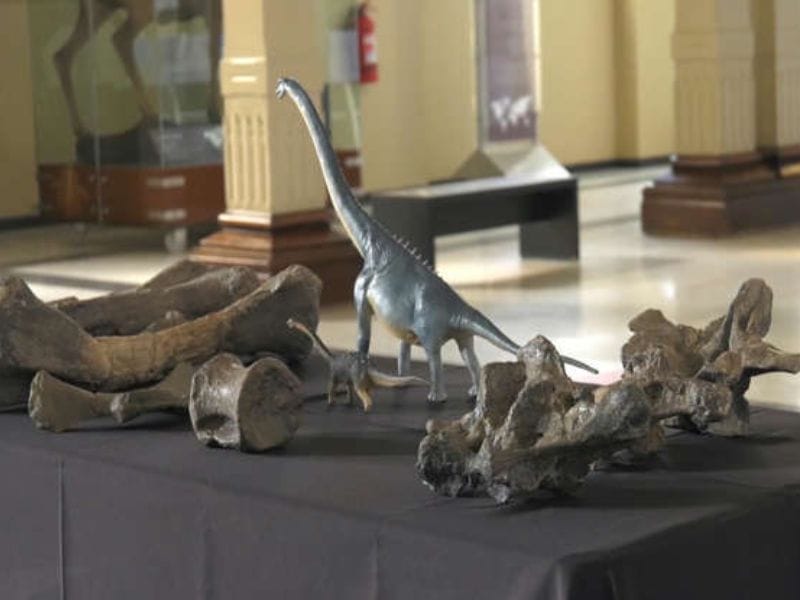
Source: Mediabanco Agencia/Wikimedia Commons
You can now see the long-necked and long-tailed creature’s bones on display at the Museum of Natural History in Santiago. It’s an incredible reminder of the ancient world.
Ancient Casabermeja Beautiful History
In the north of Málaga, on the banks of River Guadalmedina, lies Casabermeja – a beautiful, white-washed village with a rich history. In 2021, a 5,000-year-old necropolis was discovered in the area. Forensic scientists confirmed the human remains found dated back to the Neolithic and Chalcolithic (Copper) ages.
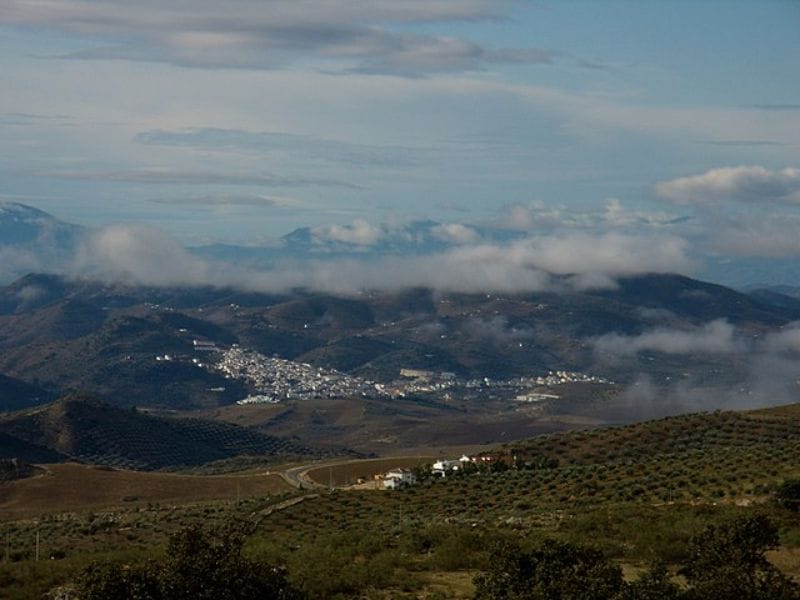
Source: Por los caminos de Málaga / wikicommons
Five more burial sites were found within caves with funerary objects. Ancient cave paintings provide further evidence of prehistoric settlements in the region.
Bronze Age Mosaics in Turkey
Archaeologists in Turkey made a fantastic discovery at Usakli Hoyuk in Yozgat’s Sorgun district – a 3,500-year-old set of paving stones described as the ancestor of Mediterranean mosaics. These little-known stones, in shades of beige, red, and black, were arranged in simple geometric shapes such as triangles and curves.
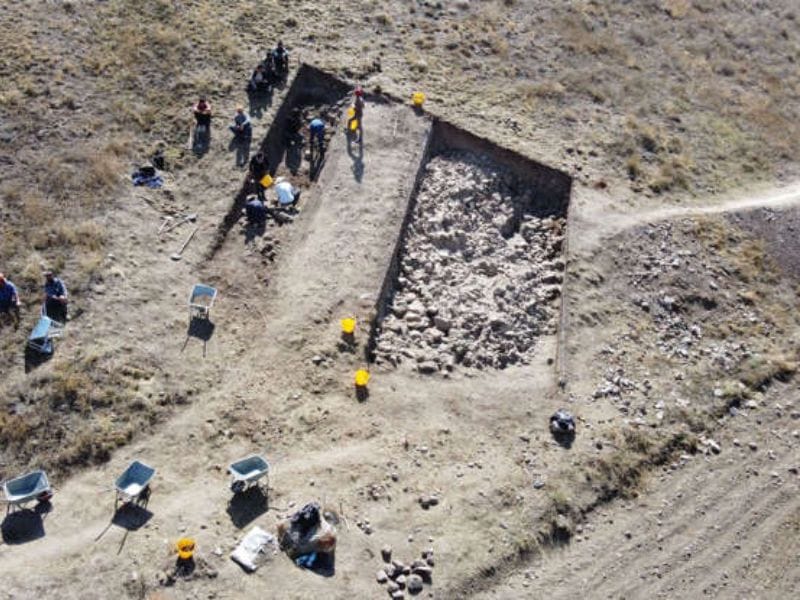
Source: VOLKAN NAKIBOGLU/AFP/Getty Images
Surprisingly, they date back 700 years before the oldest known mosaics of ancient Greece! Excavations at the site, which is believed to be the lost Hittite center of Zippalanda, began in 2008. It’s an incredible find that gives us a glimpse into the daily life of the Bronze Age Anatolian civilization.
Iron Age Jerusalem Wall
Archaeologists from the Israel Antiquities Authority made a fascinating discovery at the City of David National Park in Jerusalem’s Old City. They believe they uncovered a missing piece of the original Iron Age wall that protected the city 2,700 years ago.
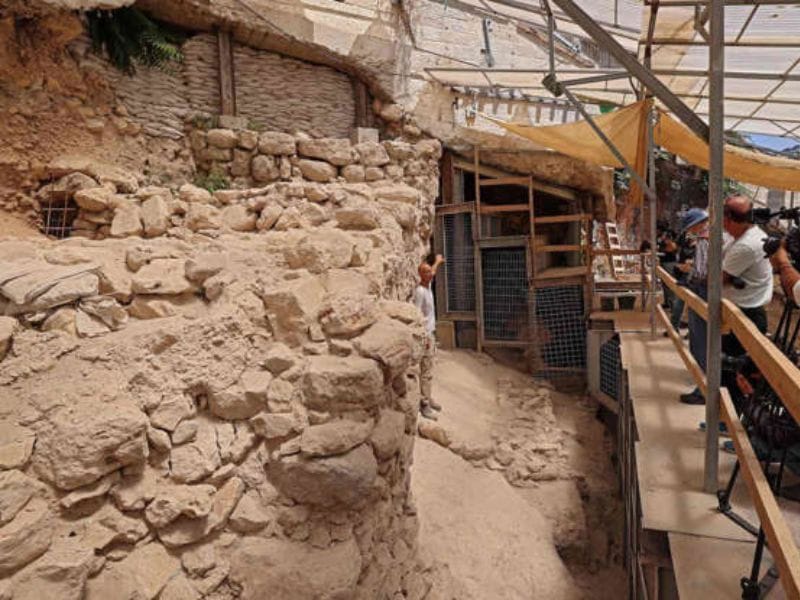
Source: EMMANUEL DUNAND/AFP/Getty Images
Nebuchadnezzar II destroyed the wall in the Babylonian invasion of 586 BC. The find backs up the theory that a massive wall once surrounded the city’s eastern side. Along with the wall, the archaeologists also found a Babylonian stamp seal, a Hebrew-scripted bulla, and various vessels.
Rare Bronze Lamp Find
In May 2021, archaeologists uncovered a rare and fascinating bronze oil lamp in Jerusalem’s City of David – a relic from almost two thousand years ago. The lamp is shaped like a half head of a bearded man, and the Israel Antiquities Authority believes it was an offering to bring good luck to the building’s occupants.
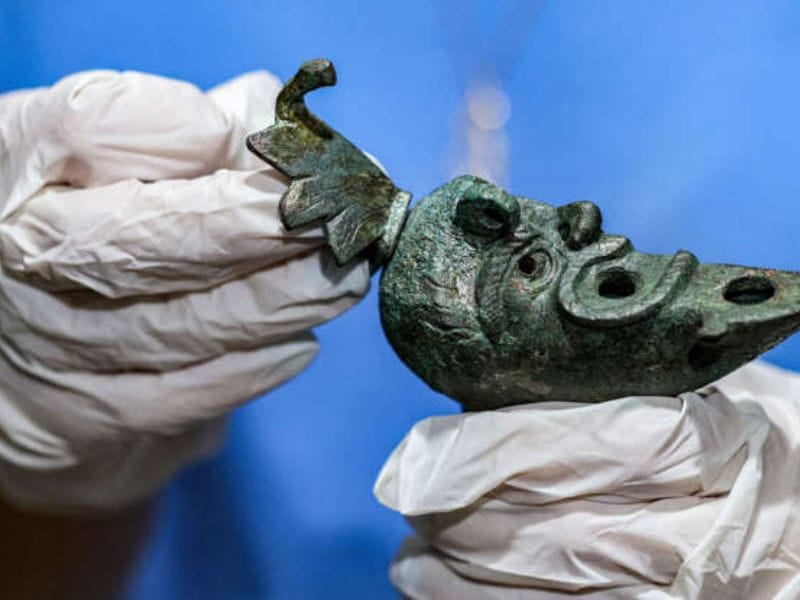
Source: MENAHEM KAHANA/AFP/Getty Images
It is estimated to be from the late 1st century or early 2nd century, and amazingly, its wick was still preserved at the excavation site. This extraordinary find provides us with a unique insight into the past.
Neanderthal Art Discovery, Germany
The discovery of a 51,000-year-old deer toe bone with carved geometric lines in Germany’s Harz Mountains in July 2021 confirms that Neanderthals had artistic skills. This impressive piece of art is one of the oldest ever found.

Source: Dosseman/ wikicommons
Nearby were a deer shoulder blade and a cave bear’s skull – more evidence that Neanderthals were artfully creative.
Golden Tongued Mummies, Egypt
Archaeologists at the Taposiris Magna Temple near Alexandria uncovered ancient mummies with golden tongues in Feb 2021, a discovery that can leave treasure hunters in awe. The 2,000-year-old mummies were found in 16 burial shafts, dating from the Greek and Roman era.
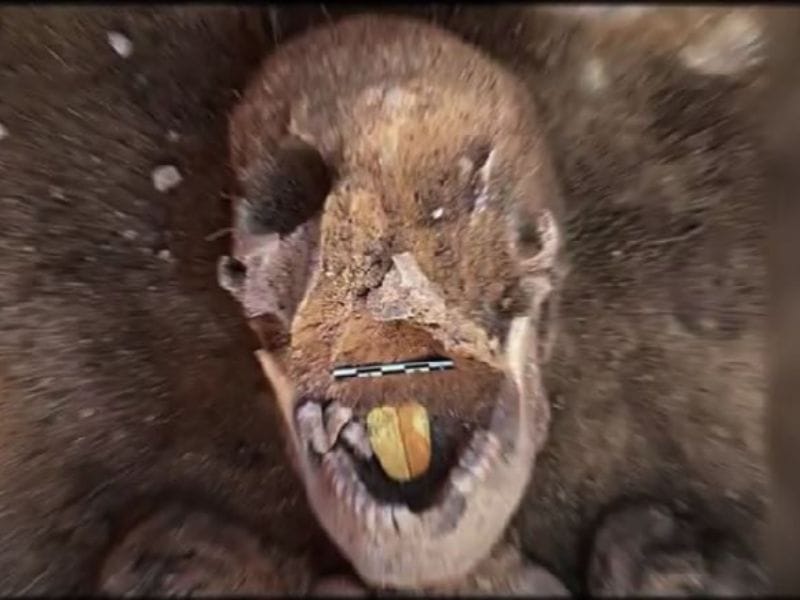
Source: Daily News / Youtube
Golden amulets shaped as tongues were placed in the mouths of the deceased, believed to aid in speaking to the court of Osiris in the afterlife. Along with the mummies, a female funeral mask was also discovered.
Ancient Kurgan of Novooleksandrivka, Ukraine
As part of road works in July 2021, excavations of an ancient kurgan (burial mound) uncovered multi-layered graves dating back to the Early Bronze Age, Scythian era, and Middle Ages.
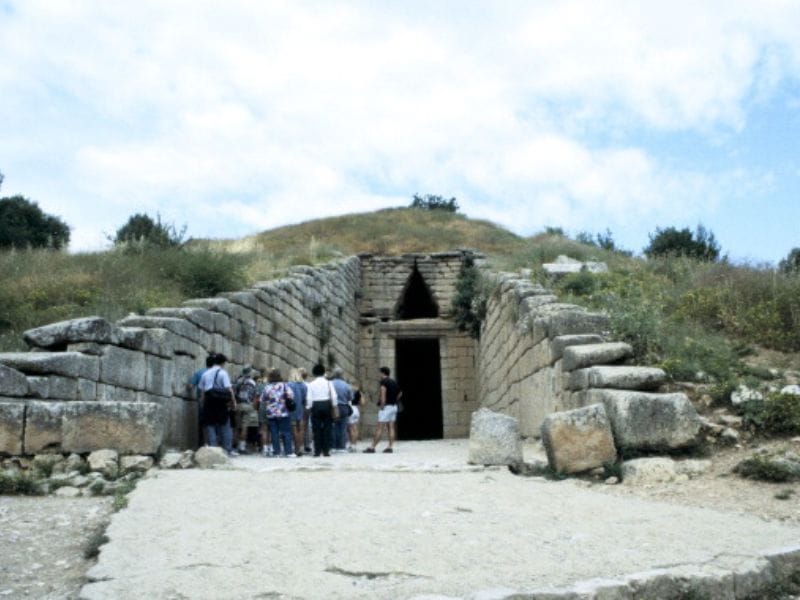
Source: Ann Ronan Pictures/Print Collector/Getty Images
Inside the 5,300-5,500-year-old mound, archaeologists found 27 skeletons, one of which showed signs of mummification. Alongside the remains were artifacts such as wolf-fang necklaces and flint tools. In the inner part of the mound, there was also a stone structure known as a cromlech, made up of tall vertical blocks placed in a circle.
Prehistoric Beer and Cheese, Austria Alps
A recent discovery in the Hallstatt-Dachstein/Salzkammergut salt mines in the Austrian Alps has uncovered the surprising fact that Iron Age Europeans were already brewing and consuming beer and blue cheese. This finding shows that prehistoric miners were ahead regarding their food techniques.
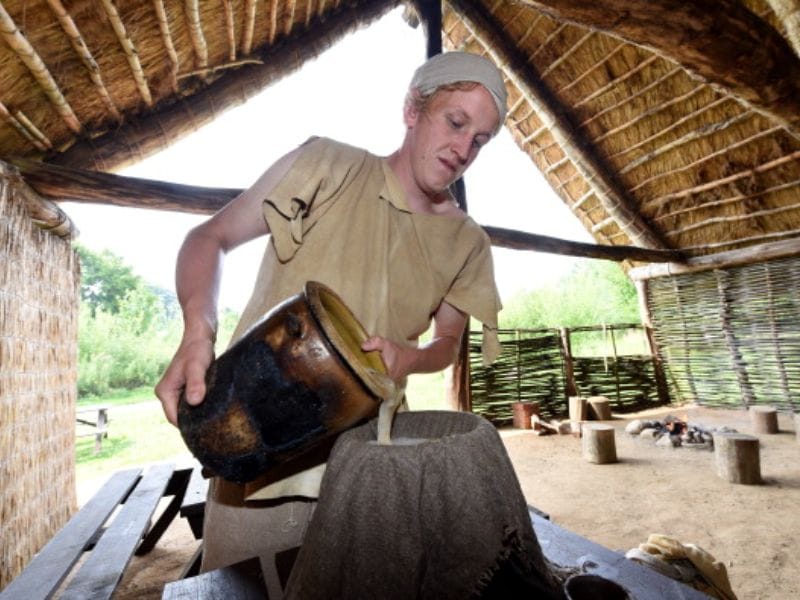
Source: CARSTEN REHDER/DPA/AFP via Getty Images
The presence of two fungi linked to fermentation was detected by experts analyzing paleofeces from October 2021, revealing the advanced food practices of prehistoric miners despite limited resources. The Hallstatt-Dachstein/Salzkammergut salt mine, now a UNESCO World Heritage Site, has a long history of salt production spanning over 3,000 years.
Roman-Era Tombs Found, Turkey
Archaeologists uncovered a great network of rock-cut tombs in October 2021 near Uşak in Turkey. The 400 tombs had been cut into a canyon wall around 1,800 years ago. Many of the remains were adorned with intricate wall paintings of vines, flowers, mythological figures, geometric patterns, and more.
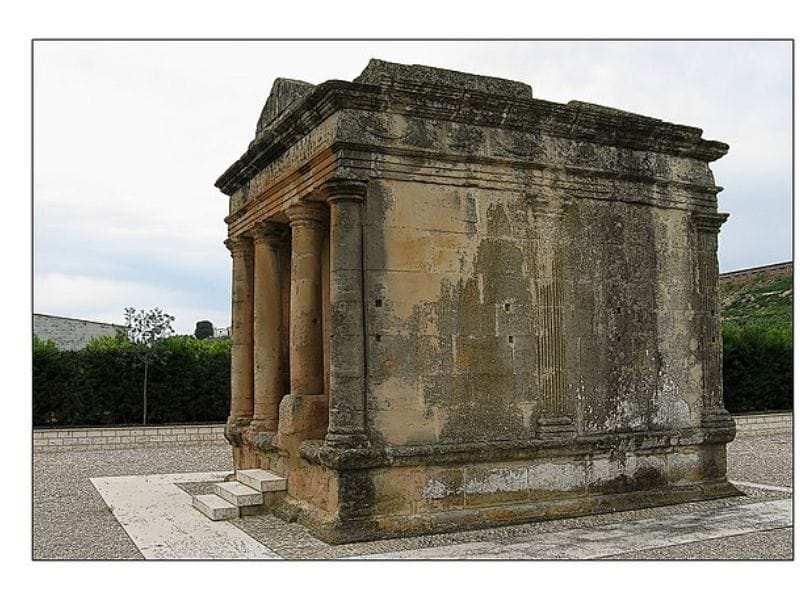
Source: Roman Era Tomb / wikicommons
Plus, archaeologists even uncovered pottery and artifacts. These tombs date back to Alexander the Great, and the ancient city of Blaundos became an important Roman city in Asia Minor.
Man Remains Unearthed at Herculaneum, Italy
In October 2021, archaeologists discovered the ruins of the ancient Roman town of Herculaneum near Pompeii! It was the first archaeological dig there in almost thirty years – and they unearthed something incredible. They stumbled upon the remains of a man just a few steps away from what was once the town’s beach.
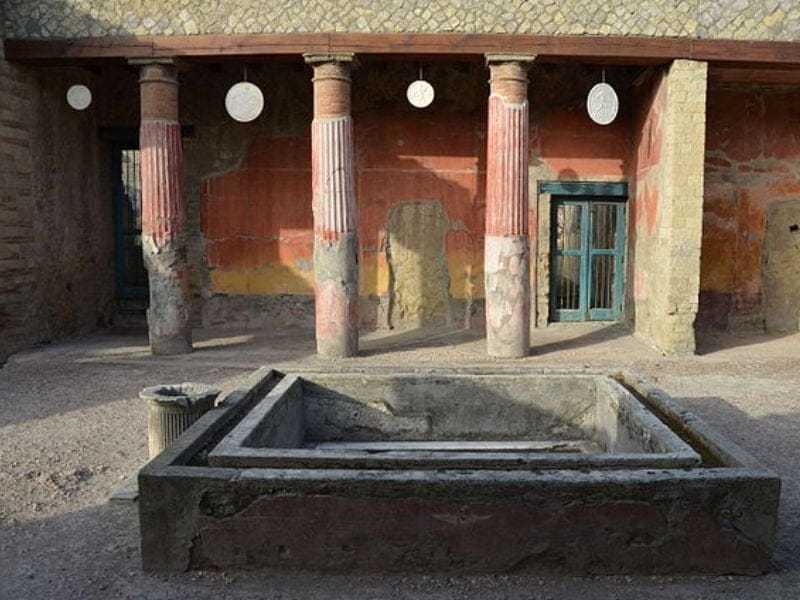
Source: Roman Era Tomb / wikicommons
He was encased in a thick layer of mud and surrounded by carbonized wood, including a roof beam that may have fallen on him during the catastrophic eruption of Mount Vesuvius in AD 79.
Dinosaur Footprint, South West
Four-year-old Lily Wilder had a unique experience on a walk with her dad along Bendricks Bay near Barry, South Wales. While strolling, she spotted an unusual imprint on a rock and took a photo. Talk about a lucky find! The experts identified it as a 220-million-year-old footprint of a herbivorous dinosaur preserved in mud.
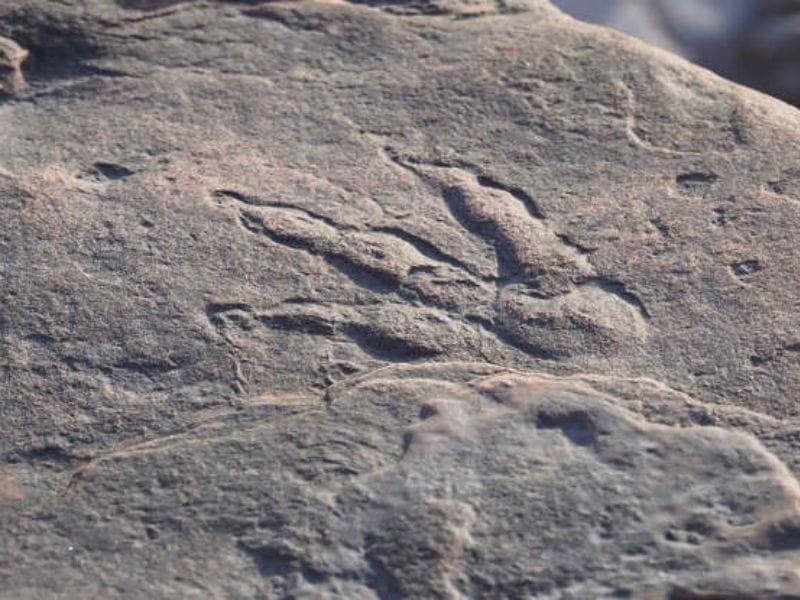
Source: National Museum Cardiff/Facebook
It was then extracted from the site and taken to the National Museum Cardiff. So if you’re ever in Cardiff, head to the museum and check out Lily’s once-in-a-lifetime discovery!
Uncovering Ancient Rome's Pomerium Cippus
Excavations for the redevelopment of a piazza in Rome in August 2021 uncovered a large marble boundary stone known as a pomerium cippus. This stone marked the sacred limits of the Roman Empire’s capital in AD 49, the time of Emperor Claudius.
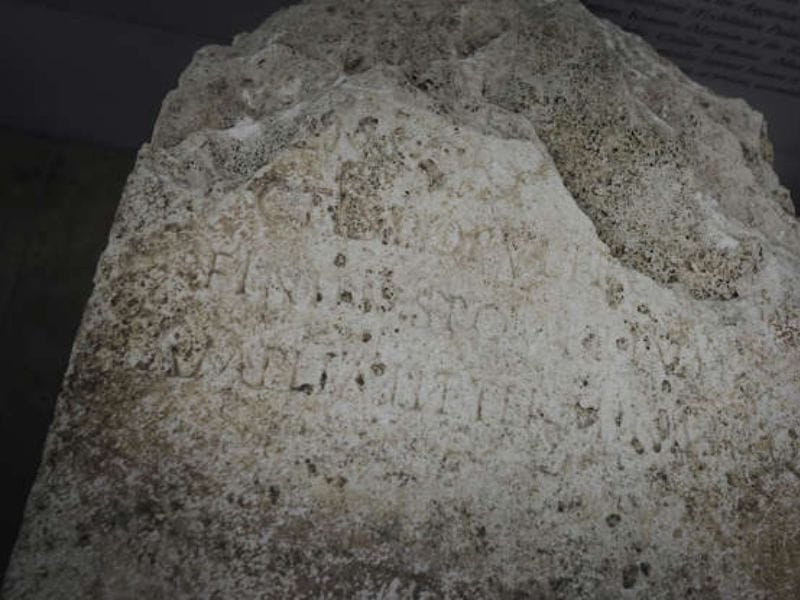
Source: Stefano Montesi/Corbis/Getty Images
It was laid to separate the historic city and its conquered territory. This is the first discovery of its kind in more than 100 years! It’s an exciting moment for archaeologists and historians alike.
Saqqara's Mummies Found, Egypt
On January 10th, 2021, the ancient city of Memphis unveiled another mystery – the Saqqara burial grounds. Archaeologists discovered burial shafts, coffins, and mummies that date back nearly 3,000 years, including a series of wooden coffins adorned with stunning artwork.
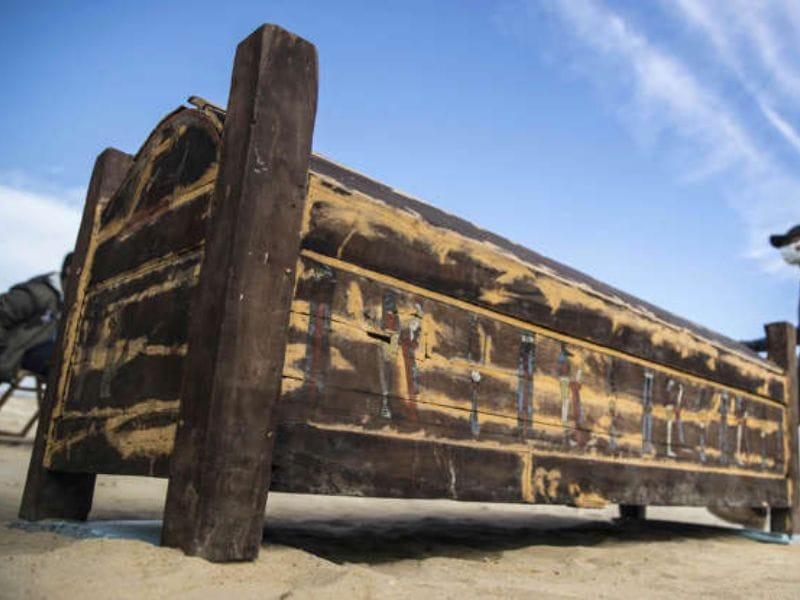
Source: KHALED DESOUKI/AFP/Getty Images
These coffins contained mummies alongside artifacts such as amulets, funeral statues, and masks. One of these painted coffins was presented to the public – a mesmerizing glimpse into the past.
Ole Ginnerup Iron Age golden Treasure Discovery, Denmark
Ole Ginnerup Schytz had luck on his first day of metal detecting when he discovered a hoard of Iron Age golden treasure in Vindelev, near Jelling, on September 11th, 2021. The Vejle Museum in Jutland dubbed it as one of the largest, most prosperous, and most beautiful finds in Danish history.

Source: Vejlemuseerne/Facebook
Weighing nearly a kilogram, the Vindelev Hoard contained huge gold medallions, coins, and jewelry. It even had a coin dating back to Emperor Constantine the Great’s time. No one knows why the hoard was buried, but experts suggest it was to keep it safe or as an offering to the gods.
Lost Golden City of Aten, Egypt
In April 2021, Egyptian archaeologists uncovered a lost city dating back to the reign of Amenhotep III – a 3,000-year-old city known as Rise of Aten. Described by Egyptologist Zahi Hawass as a “Lost Golden City,” the sprawling royal city is the largest ancient city ever found in Egypt.

Source: KHALED DESOUKI/AFP/Getty Images
The well-preserved mud-brick structures have uncovered a bakery, various residential and industrial districts, and a treasure trove of artifacts. Jewelry, pottery, mud bricks bearing the seals of Amenhotep III, and even a vessel containing boiled or dried meat have been found.
Ancient Assyrian Artifacts Discovered
Archaeologists have uncovered a real treasure from 2,700 years ago in Mosul, Iraq – seven beautifully preserved marble slabs covered with carvings of palm trees, pomegranates, and Assyrian soldiers shooting arrows.

Source: ZAID AL-OBEIDI/AFP via Getty Images
The slabs were part of a secret room in King Sennacherib’s palace and were discovered while the team was rebuilding the Mashki Gate, destroyed by ISIS militants in 2016. It was originally built in 700 BC. Now that these slabs have been found, we get a glimpse into the ancient Neo-Assyrian Empire’s history.
Roman Mosaic Discovery, UK
Jim Irvine was one of the lucky few who scored a historic find during the lockdown. While strolling on his father’s Rutland land, he stumbled across pottery and clay tiles. After contacting a local museum, archaeologists from the University of Leicester came to excavate the site – to discover a rare Roman mosaic from Homer’s Iliad.
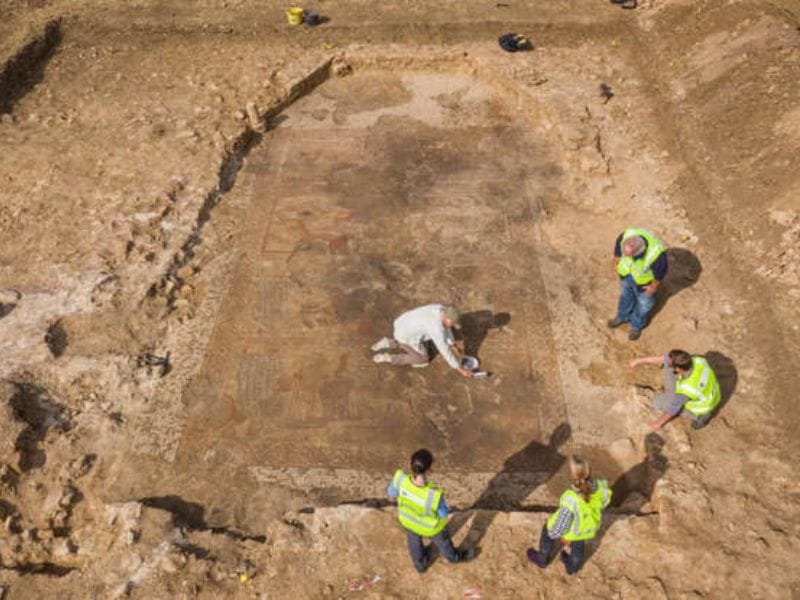
Source: Historic England/Facebook
Historic England experts say this is the first of its kind to be found in the UK. What a find! Who knows what other treasures may be hidden in the ground, just waiting to be discovered?
UK's Giant Sea Dragon Find
The UK is celebrating one of its greatest fossil finds – a giant sea dragon. Discovered after excavations in August and September 2021, this magnificent creature measured 33 feet (10m) and is estimated to have lived 180 million years ago.
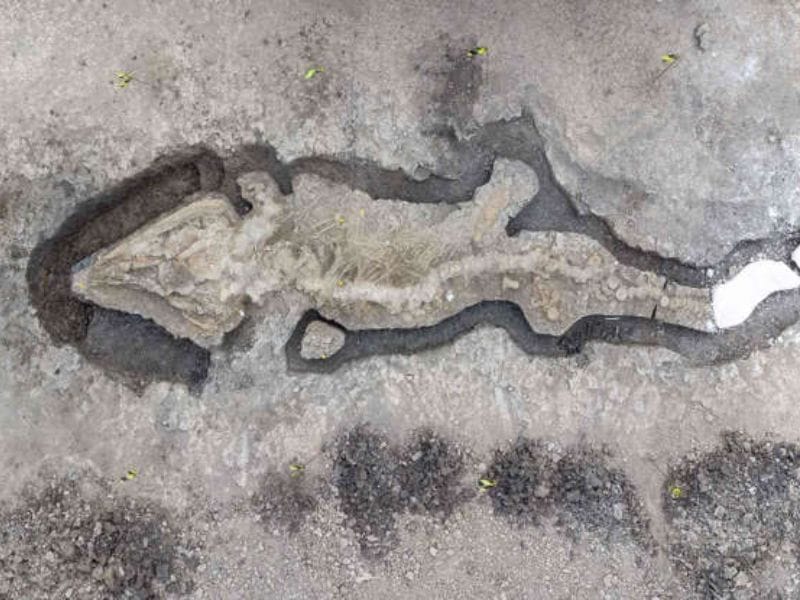
Source: Anglian Water / wikicommons
This isn’t the first ichthyosaur found in the UK, though. In the 70s, two smaller and incomplete skeletons were discovered. But the most recent find is extraordinary, as it’s amazingly well-preserved.
Hyde Abbey's Medieval Water Tunnel, UK
In August 2022, an incredible discovery was made near Hyde Abbey – the final resting place of King Alfred the Great. Archaeologists and volunteers from the Hyde900 charity unearthed a medieval water tunnel dating back to Alfred’s reign.
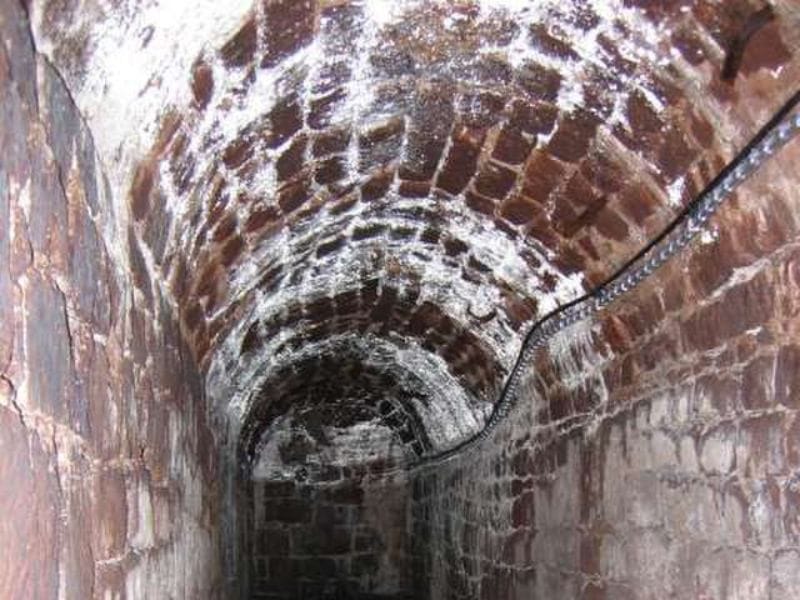
Source: Malcolm Etherington / wikicommons
This tunnel supplied water to the abbey’s refectory, kitchens, infirmary, and even the monks’ latrines. In addition, the team also discovered Roman pottery shards, medieval tiles, window glass, as well as bones. These were found in the remains of a two-story building uncovered in a garden in 2020.
Texas Dinosaur Tracks Discovered
In August 2022, Ta wild discovery was made in Texas after suffering from severe drought conditions. A massive dinosaur tracks! At Dinosaur Valley State Park, in a dried-up muddy riverbed, the footprints of an Acrocanthosaurus were found.

Source: Diane Turner / wikicommons
A 15-foot tall, 7-tonne ancient cousin of the T-rex left behind a lasting reminder of its existence. Experts also believe that the Sauroposeidon, a 60-foot tall, 44-tonne beast, could have left some of the tracks too! Although the park is known for its dino tracks, this was the first time these particular prints were seen.
Fearsome Prehistoric Sea Monster, Casablanca, Morocco
Scientists in Morocco have uncovered a shocking fossil that gives us a glimpse into the creatures that lurked beneath the oceans millions of years ago! This monstrous hybrid of a Komodo dragon, great white shark, killer whale, and T. Rex has been named Thalassotitan atrox – translation: ‘dreadful titan of the sea.’
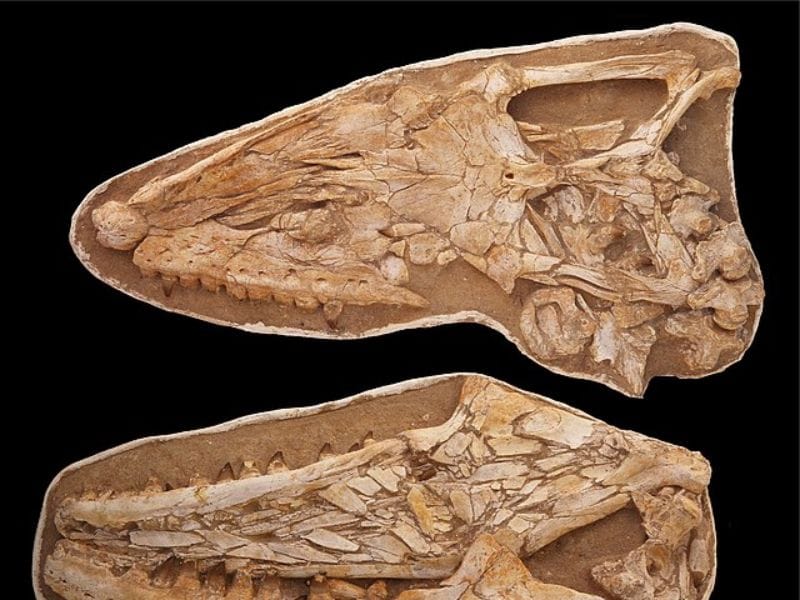
Source: NickLongrich / wikicommons
It lived 66 million years ago and measured a whopping 30 feet (9m) in length. The team from the University of Bristol, who made the remarkable discovery, believed that the creature spat out the bones of its prey, so there might still be some bones lying nearby.
Luxurious Roman Barn Conversion
In 2021, archaeologists made a remarkable discovery at a grand Roman villa complex in Rutland – a rare mosaic depicting a scene from Homer’s Iliad. The following year, they uncovered an even bigger surprise – one of Britain’s oldest barn conversions.

Source: ChurchCrawler / wikicommons
The timber-built barn was likely converted to stone in the 3rd or 4th century AD and transformed into a luxurious bathing suite. It featured a steam room, a warm room, a cold plunge pool, and underfloor heating. The other end of the barn was probably used for agricultural or craft work. Talk about a life of luxury!
Ancient Artifacts Found in Alicante, Spain
Spanish police got a tip-off at the end of 2022 and raided two homes in the Alicante province. What they discovered was mind-boggling. They found an illegal stash of 350 ancient artifacts, from 5,000-year-old bone fragments to Phoenician pottery.

Source: José Antonio JG / wikicommons
The artifacts are now in a local archaeological museum while the investigation is ongoing. One of the suspects said the items were inherited from a deceased relative who wrote interesting journals about where the items were found. These handwritten notes could help uncover hidden ancient sites in Alicante.
English Civil War Skirmish
Archaeologists working on the HS2 site recently made a remarkable discovery: a 13th or 14th Century gatehouse with over 200 marks from pistol and musket balls. These marks were previously undocumented in any historical records, leading experts to believe that they date back to 1642, potentially marking the first battle of the English Civil War.
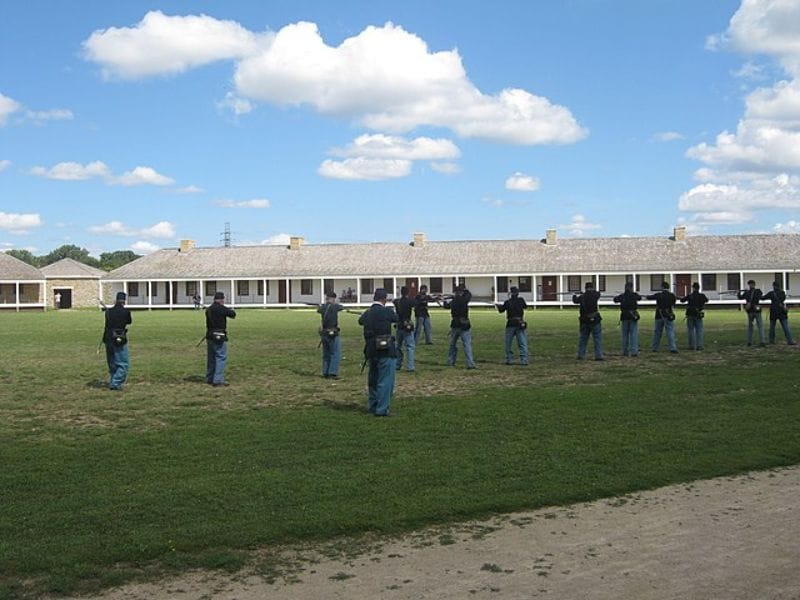
Source: Ise Varghese Mac / wikicommons
The marks on the gatehouse are believed to have been made by Parliamentarian forces as they fired at the Royalist-owned property on their way to the Battle at Curdworth Bridge. This leads to a new theory that the gatehouse could have been the site of the opening battle of the English Civil War, making it a fascinating discovery.
